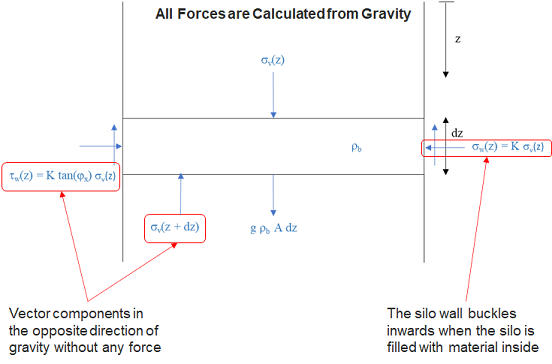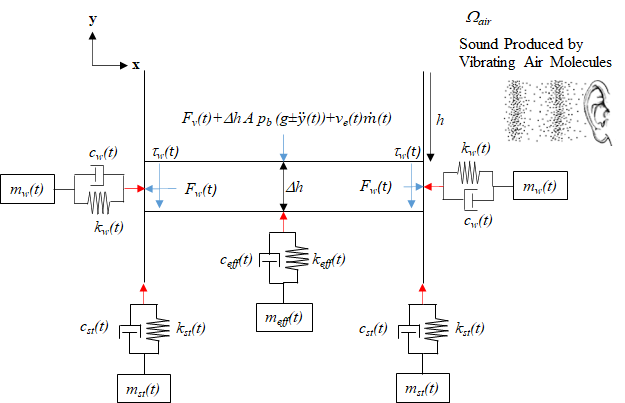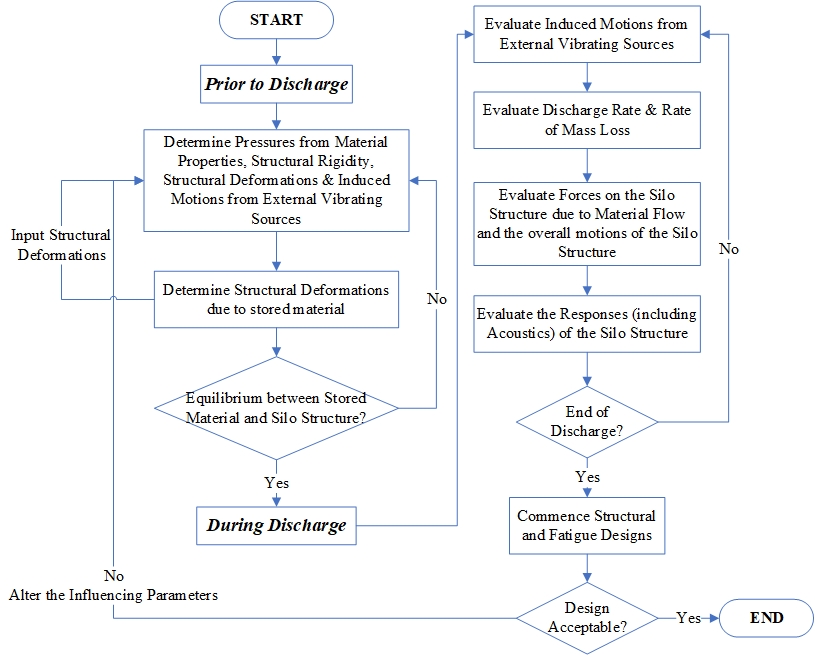Patents
Australia (AU2018253634)
South Africa (2019/07435)
New Zealand (759448)
Existing Silo Analysis and Design Methods
To fully understand the patented method, it is necessary to understand the technical shortcomings found in the current silo analysis and design methods which have been derived from Janssen's theory shown in Figure 1.
The popular theory and its derivatives suggest the discharge pressure or load, which often governs silo design, is independent of the overall motions of the silo, and the rate at which the material inside the silo is taken out, or discharge rate. However, decade-long research into the design of silos uncovered the load generated during discharge is governed by:
Structural properties of the overall silo;
Properties of material stored inside silo; and
Discharge rate of stored material.
This means such load can be higher than what the silo was designed for if it is not operated within governing parameters. Significant overloading can cause the silo to collapse – resulting in injuries, fatalities, and substantial costs for the silo owner.
One can liken this phenomenon to an archer firing an arrow. According to Janssen’s theory and its derivatives, the arrow flies as far and fast irrespective of how the cable is stretched, and how fast grip on the arrow is released.
In reality, how far and fast the arrow flies depends on how far the archer stretches the arrow, and how quickly grip on the arrow is released. It is deeply concerning that the present popular theory that infers otherwise. In this context, the generated discharge pressure or load depends on the structural properties of the overall silo structure, discharge rate and properties of the material inside the silo. Furthermore, the popular theory suggests the wall of the container buckles inwards when filled.
|
 Figure 1: Janssen's theory of year 1895. Figure 1: Janssen's theory of year 1895.
|
Patented Method
The patented method, graphically illustrated in Figure 2, is developed from established scientific principles from many areas of science such as:
Geotechnical Engineering;
Structural Engineering;
Acoustics Engineering;
Earthquake Engineering;
Rocket Science;
Material Engineering; and
Structural Dynamics.
|
 Figure 2: Graphical illustration of the patented method (2017). Figure 2: Graphical illustration of the patented method (2017).
|
|
 Figure 3: Solution process of the patented method (2017). Figure 3: Solution process of the patented method (2017).
|
The patented method, mathematically expressed in the equation below, illustrates equilibrium between the granules inside the silo, the overall silo structure and the surrounding air. The driving force due to material flow and damping force provided by the structure are determined from material properties of the granules, structural properties of the overall silo structure and discharge rate. As such, the dynamic forces generated during discharge are controllable by altering the material properties of the granules inside the silo, the structural properties of the silo and the discharge rate. Thus, enabling the silo to be more economically designed, safer to operate and advanced technologies such as machine learning and AI to be incorporated.
|